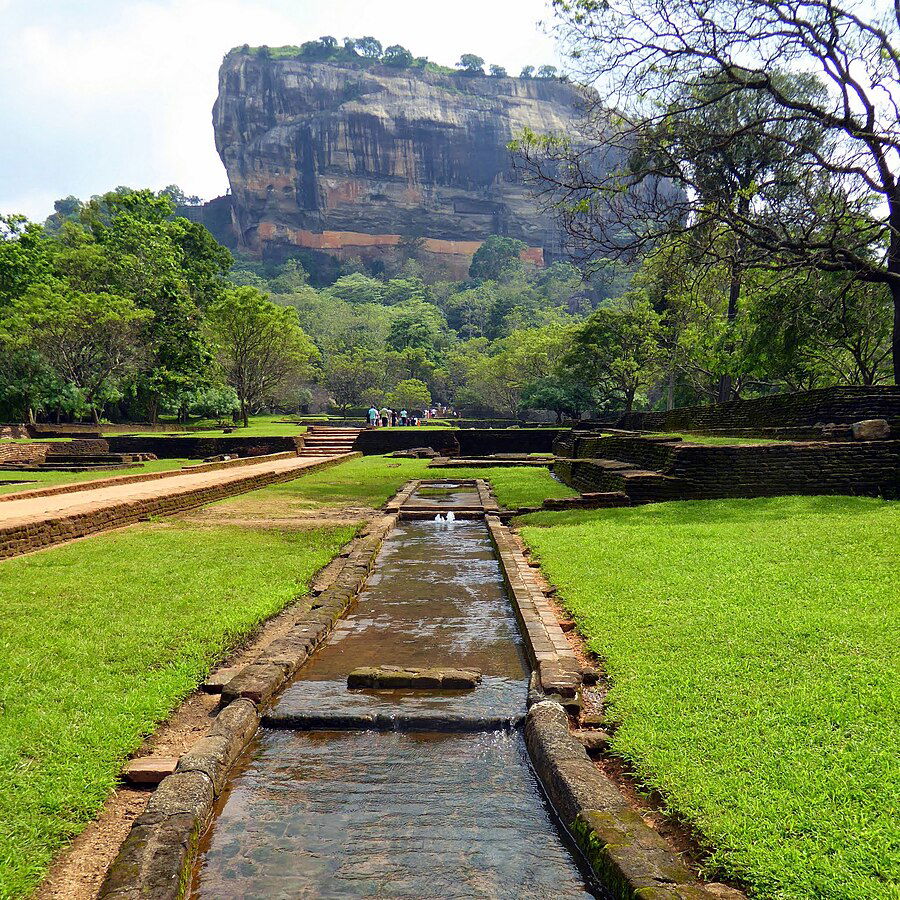Why Sigiriya is a Hidden Gem: Exploring Its Unique Attractions and Serene Landscapes
Some consider Sigiriya to be the 8th wonder of the world, and is a fantastic ancient site filled with many ruins and remarkable hydraulic technology. The advanced civilisation of Sri Lanka comes to light with Sigiriya. Discover what makes Sigiriya special, and why it is a hidden gem lying in the heart of Sri Lanka's Cultural Triangle.
History
Sigiriya has a history which goes back to prehistoric times, and according to archaeologists, it is millions of years old and has been continuously habituated with ruins of monastic settlements going back thousands of years. Recorded history dates back to 447-495 CE when Kashyapa the the king's son murdered his father to capture the Kingdom. However, the rightful heir, his half-brother, Mugalan wanting to reclaim his rights waged war against him.
To escape the advancing forces, he relocated the kingdom from Anuradhapura to Sigiriya and built it up to be a massive fortress with a moat and strong fortification walls. Sigiriya is a marvel in hydraulic technology. Atop the summit and on the palace grounds you will encounter pools and water gardens of remarkable beauty. It remains a mystery how the builders transported water and other essentials to the summit.
Incidentally, the pool at the summit never dries out to this day. According to local folklore, the actual palace was inside the hallowed-out rock, which was sealed off by British archaeologists who found the site in the early 19th century. If you are looking for luxury hotels in Sigiriya, the likes of Water Garden Sigiriya are among the options to look out for.
The Water Gardens

The Water gardens infornt of Sigiriya | Image via Wikimedia Commons
Facing the main western entrance to Sigiriya are the well-maintained Water Gardens of the palace. The lawns are carefully tended to this day and have ponds, all arranged symmetrically with water channels and a fountain embellishing the palace gardens.
The Rock Gardens
The Rock Gardens display a notable difference from the symmetry found at the Water Gardens. It is comprised of shrouds of thick forest, with pathways intertwining between massive boulders and rocky arches. Most of the boulders have extended niches; these would have initially been supports for wooden pavilions that stood on nearly every boulder. It is believed that it was in this garden of boulders that the bhikkhus of Sigiriya had lived hundreds of years before it became part of the palace. The remnants of the community of monks can be seen to this day, amongst the myriad caverns and shelters.
The heavenly Damsels of Sigiriya
A spiral metal staircase will lead you to a hidden cavity, it is the abode of Sigiriya’s celebrated frescoes- the Sigiriya Damsels. Painted on the orders of King Kassapa, the stunning murals are likely the biggest-ever project, attempted on a rock face! It depicts 21 attractive, bare-chested ladies, covered in fluffy clouds, waist down. Many archaeologists believe the artwork would have covered the whole expanse of the crevice! The women are shown scattering petals and presenting bowls of fruit. These paintings are remarkable, and quite unlike those, you would encounter in ancient Sri Lanka, because the majority of artists liked to focus on the artistic portrayal of Buddhist themes.
The Mirror Wall
A unique sight in Sigiriya is the polished Wall of Mirrors. The shiny plaster is a result of a mixture of burnished lime, beeswax, egg whites and forest honey. It used to be so shiny, that it reflected people's images on its walls! Many visitors to Sigiriya covered this wall with ancient graffiti over the last 1,500 years. The graffiti includes countless brief poems, impressions of the rock, and scribbles, praising the beauty of the damsels. The oldest of the graffiti dates back to the 7th century CE.
The Summit
The summit, of course, will be the apex of the whole experience! It is incredible with the remnants and foundations of what would have been Kassapa's palace. At the lower end of the summit, there is a sequence of terraces that would have been gardens once upon a time. There is also the throne and rock pools with fresh water collected to this day. Not forgetting, of course, the spectacular view of the surrounding thick jungles, one can certainly imagine a time when King Kassapa must have kept watch, expecting the impending forces of his brother take over the site.
